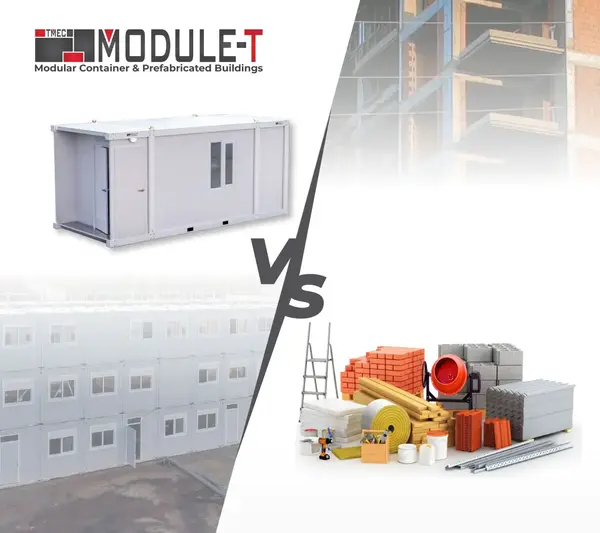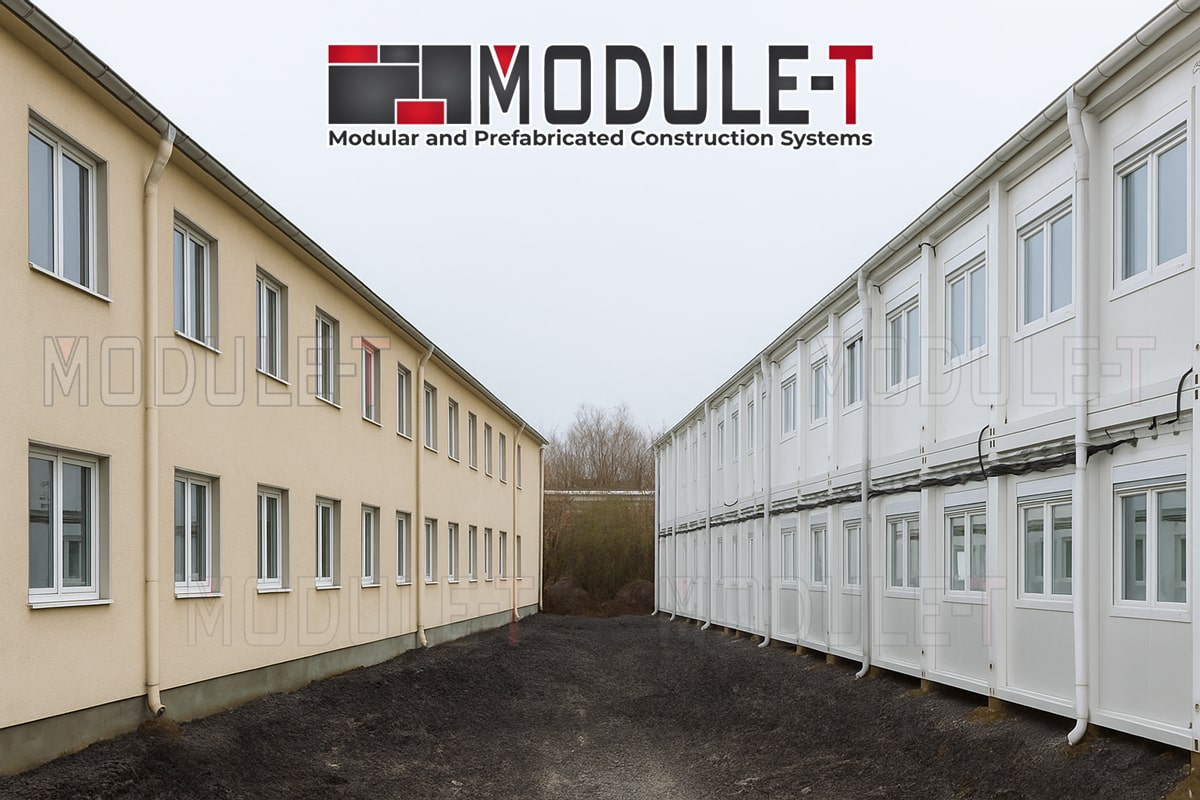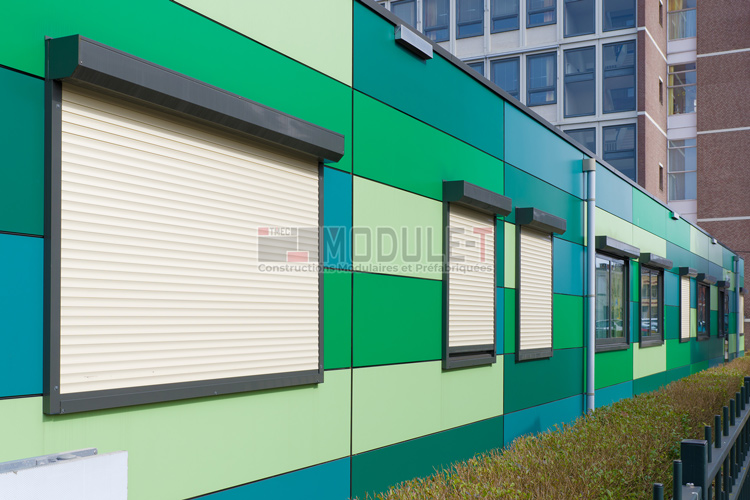Global Modular Construction Market Trends 2025 Sustainability and Innovation
17 June 2025Modular construction is an innovative building method where structures are prefabricated off-site in a controlled factory environment before being assembled on-site. This approach offers a multitude of advantages, including reduced construction timelines, minimized waste, and enhanced quality control. As the global demand for sustainable and efficient construction solutions intensifies, modular construction trends 2025 are gaining traction worldwide, setting the stage for its widespread adoption.
Off-Site Construction Efficiency
The core of modular construction trends 2025 lies in its off-site manufacturing process. This technique ensures that building components are crafted in a controlled environment, leading to higher precision and quality. The factory setting allows for the standardization of processes, which translates into faster production times and a decrease in errors commonly associated with on-site construction. This efficiency not only accelerates project timelines but also drives down costs, making modular construction trends 2025 an attractive option for developers.
Quality Control and Assurance
One of the standout features of modular construction trends 2025 is its ability to offer superior quality control. Since modules are constructed in a factory setting, there is stringent oversight at every stage of production. This meticulous attention to detail ensures that each component meets high-quality standards before it leaves the factory. As a result, builders can offer more reliable and durable structures, enhancing customer satisfaction and trust in modular construction trends 2025 methods.
Environmental Benefits
The environmental advantages of modular construction trends 2025 are significant. By minimizing on-site construction activities, there is a notable reduction in noise pollution, dust, and disruption to the surrounding area. Moreover, the precision of off-site fabrication significantly reduces material waste, making it a more sustainable alternative to traditional construction. The energy efficiency of modular buildings, enhanced by features such as superior insulation and modern energy systems, further contributes to their eco-friendly appeal.
Key Trends in Modular Construction
Growth of Sustainable Modular Design
Sustainability is no longer an option but a necessity in modern construction practices. Modular construction aligns seamlessly with sustainability objectives due to its resource-efficient processes and reduced environmental footprint. Several factors are propelling the growth of sustainable modular design:
Use of Eco-friendly Materials
Modular construction is pioneering the use of eco-friendly materials, which play a crucial role in reducing the carbon footprint of building projects. Recycled and sustainable materials are increasingly being incorporated into modular designs, offering an environmentally responsible alternative to conventional materials. This shift not only supports global sustainability goals but also appeals to environmentally conscious consumers and investors.
Energy Efficiency
Energy efficiency is a hallmark of modular construction. Prefabricated modules are engineered to optimize energy usage through advanced design features. Improved insulation, energy-efficient HVAC systems, and the integration of smart home technologies are becoming standard in modular designs. These innovations not only reduce energy consumption but also lower utility costs for occupants, making modular buildings an economically viable option.
Waste Reduction
The factory-controlled environment of modular construction allows for precise material usage, which significantly reduces waste. Traditional construction methods often result in excess material wastage due to on-site errors and inefficiencies. In contrast, modular construction employs advanced planning and resource management techniques to ensure that materials are used optimally, minimizing waste and promoting sustainability.
Technological Innovations
Technological advancements are revolutionizing the modular construction industry, enabling new possibilities and efficiencies. Key innovations include:
Building Information Modeling (BIM)
Building Information Modeling (BIM) has become an indispensable tool in modular construction trends 2025. This sophisticated software facilitates the detailed planning and visualization of modular projects, enhancing accuracy and efficiency. By creating comprehensive digital models, BIM allows stakeholders to identify potential issues before construction begins, reducing the likelihood of costly errors and delays.
Robotics and Automation
The integration of robotics and automation in modular construction is transforming manufacturing processes. Automated systems enhance the speed and quality of module production by performing repetitive tasks with precision and consistency. This technological leap not only accelerates production timelines but also reduces labor costs, making modular construction a more competitive option in the market.
3D Printing
Emerging 3D printing technologies are unlocking new design possibilities in modular construction trends 2025. This innovation enables the creation of complex building components with unprecedented precision and customization. 3D printing allows architects and builders to explore innovative designs that were previously constrained by traditional construction methods, broadening the creative horizons of modular construction.
Increasing Global Demand
The global appetite for modular construction is growing, driven by several compelling factors:
Urbanization
Rapid urbanization in developing countries is creating an urgent need for quick and affordable housing solutions. Modular construction offers a scalable and efficient approach to meet these demands, providing quality housing in shorter timeframes. As urban populations continue to swell, modular construction trends 2025 are poised to play a critical role in addressing housing shortages and improving living standards.
Cost Efficiency
The cost-efficiency of modular construction is a major draw for developers and investors. By reducing labor requirements and shortening construction timelines, modular methods can lead to significant cost savings. This economic advantage, coupled with the potential for high-quality outcomes, makes modular construction an attractive proposition for a wide range of projects, from residential developments to commercial ventures.
Scalability
Modular techniques offer unparalleled scalability, making them ideal for large-scale projects. Whether expanding a residential community or constructing a new commercial complex, modular construction trends 2025 allow for seamless scalability without compromising on quality or efficiency. This flexibility is particularly valuable in regions experiencing rapid growth, where the ability to quickly scale up infrastructure is essential.
Integration of Smart Technologies
Smart technologies are becoming integral to modular construction, enhancing the functionality and sustainability of buildings:
Smart Home Systems
Modular buildings can be equipped with advanced smart home technologies, offering residents enhanced control over energy consumption, security, and comfort. These systems allow occupants to remotely manage lighting, heating, and security features, creating a more convenient and efficient living environment. The integration of smart home technologies is transforming modular buildings into cutting-edge, future-ready living spaces.
IoT Integration
The Internet of Things (IoT) is playing a pivotal role in the evolution of modular construction trends 2025. IoT devices can monitor building performance and maintenance needs in real-time, ensuring long-term operational efficiency. By collecting and analyzing data, these devices enable proactive maintenance and energy management, reducing operational costs and enhancing the longevity of modular structures.
Sustainable Energy Solutions
The integration of renewable energy systems, such as solar panels and wind turbines, is becoming increasingly prevalent in modular construction. These sustainable energy solutions align with global efforts to reduce carbon emissions and promote clean energy. By harnessing renewable resources, modular construction trends 2025 can achieve energy independence and reduce their environmental impact, contributing to a more sustainable future.
Challenges Facing Modular Construction
While modular construction offers numerous advantages, it also faces certain challenges that must be addressed to ensure its continued growth and success:
Regulatory Hurdles
The landscape of building codes and regulations is complex and varies significantly between regions, presenting a challenge for the standardization of modular construction practices. Navigating these regulatory environments requires collaboration between industry stakeholders and government bodies to establish clear, consistent guidelines. Overcoming these regulatory hurdles is essential to facilitating the wider adoption of modular construction techniques.
International Standards
The establishment of international standards for modular construction is crucial to overcoming regulatory challenges. By developing globally recognized guidelines, the industry can ensure consistency and quality across different markets. International collaboration is key to achieving this goal, as it allows for the exchange of best practices and the harmonization of standards, paving the way for the global expansion of modular construction.
Local Adaptation
While standardization is important, it’s equally vital to adapt modular construction practices to local contexts. Each region has unique regulatory requirements, environmental conditions, and cultural preferences that must be considered. By working closely with local authorities and stakeholders, modular construction companies can tailor their approaches to meet specific regional needs, ensuring compliance and acceptance.
Policy Support
Government support and policy initiatives play a critical role in overcoming regulatory challenges. By incentivizing modular construction through tax breaks, grants, or streamlined approval processes, governments can encourage its adoption and growth. Policy support can also drive innovation and investment in modular construction, helping to address regulatory barriers and promote sustainable building practices.
Perception and Acceptance
There is often a perception that modular buildings lack the quality and aesthetic appeal of traditional construction. However, advancements in design and materials are dispelling these myths, showcasing the potential for high-quality, visually appealing modular structures.
Design Innovations
Design innovations in modular construction are challenging preconceived notions about aesthetics and quality. Architects and designers are leveraging advanced technologies and materials to create stunning, bespoke modular structures that rival traditional buildings in both form and function. By pushing the boundaries of design, the industry is demonstrating that modular construction can deliver high-quality, architecturally impressive outcomes.
Educating Stakeholders
Raising awareness and educating stakeholders about the benefits and capabilities of modular construction is essential for overcoming perception challenges. By showcasing successful modular projects and emphasizing their quality, efficiency, and sustainability, the industry can shift perceptions and build trust. Engaging with architects, developers, and the public through workshops, seminars, and marketing campaigns can help dispel myths and foster acceptance.
Case Studies and Success Stories
Sharing case studies and success stories from completed modular projects is a powerful way to demonstrate the potential of modular construction. By highlighting real-world examples of innovative and successful modular buildings, the industry can provide tangible evidence of its capabilities. These stories not only inspire confidence in modular methods but also encourage further adoption and investment.
Supply Chain and Logistics
Transporting modules from factories to construction sites requires careful logistical planning. Ensuring efficient supply chain management is critical to minimizing delays and maintaining project timelines.
Transportation Challenges
The transportation of large, prefabricated modules presents logistical challenges that must be carefully managed. Factors such as route planning, regulatory compliance, and transportation costs must be considered to ensure the safe and efficient delivery of modules. By collaborating with logistics experts and leveraging technology, the industry can optimize transportation processes and minimize disruptions.
Supply Chain Coordination
Effective supply chain coordination is essential for the success of modular construction projects. From sourcing materials to manufacturing modules and delivering them to the site, each stage of the process must be seamlessly integrated. By implementing robust supply chain management systems and fostering collaboration between suppliers, manufacturers, and contractors, the industry can enhance efficiency and reduce the risk of delays.
Just-in-Time Delivery
The adoption of just-in-time delivery practices can significantly improve the efficiency of modular construction projects. By coordinating the delivery of modules to align with on-site assembly schedules, the industry can minimize storage requirements and reduce the risk of damage or delays. This approach not only enhances project timelines but also optimizes resource utilization and cost-effectiveness.
Future Outlook for Modular Construction Trends 2025
As we look towards 2025, the future of modular construction is promising. With continued innovation and a focus on sustainability, modular methods are set to redefine the construction industry. Key areas of development include:
Advanced Materials
Research into new materials will continue to enhance the durability and sustainability of modular construction trends 2025. Innovations in materials science are unlocking new possibilities, enabling the creation of structures that are more resilient, efficient, and environmentally friendly. By exploring advanced composites, biodegradable materials, and smart materials, the industry can push the boundaries of what modular construction can achieve.
Global Collaboration
International collaboration will facilitate the exchange of best practices and drive the standardization of modular construction trends 2025 techniques. By working together, countries can share knowledge, expertise, and resources to overcome challenges and accelerate the adoption of modular methods. This global partnership will play a crucial role in advancing the industry and ensuring that modular construction meets the diverse needs of different markets.
Increased Investment
As the benefits of modular construction trends 2025 become more widely recognized, investment in this sector is expected to grow, supporting further innovation and development. Investors are increasingly drawn to the cost-efficiency, sustainability, and scalability of modular construction, recognizing its potential to transform the built environment. This influx of capital will drive research and development, enabling the industry to continue pushing the boundaries of what is possible.
Shaping the Future of Global Construction
Modular construction is poised to play a pivotal role in the future of the global construction industry. By embracing sustainable practices and leveraging technological innovations, modular construction trends 2025 are set to meet the demands of a rapidly changing world. As we move towards 2025, stakeholders in the construction industry must continue to champion modular methods to build a more efficient, sustainable, and innovative future. The journey ahead promises to be one of transformation and opportunity, as modular construction shapes the built environment for generations to come.
CONTACT US
MODULE-T
KURIS KULE D-100 GUNEY YANYOL NO: 2 / 77-78 , KARTAL/ISTANBUL - TURKEY
PREFABRIK DIS TIC VE SAN LTD STI- +90 216 441 01 77
- info@module-t.com





